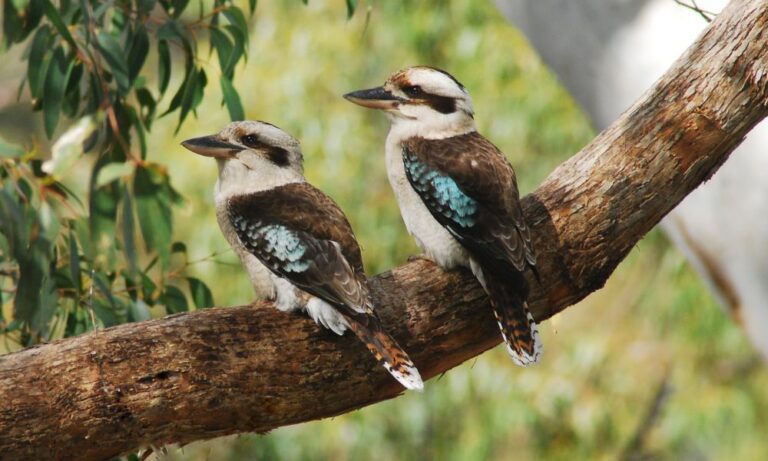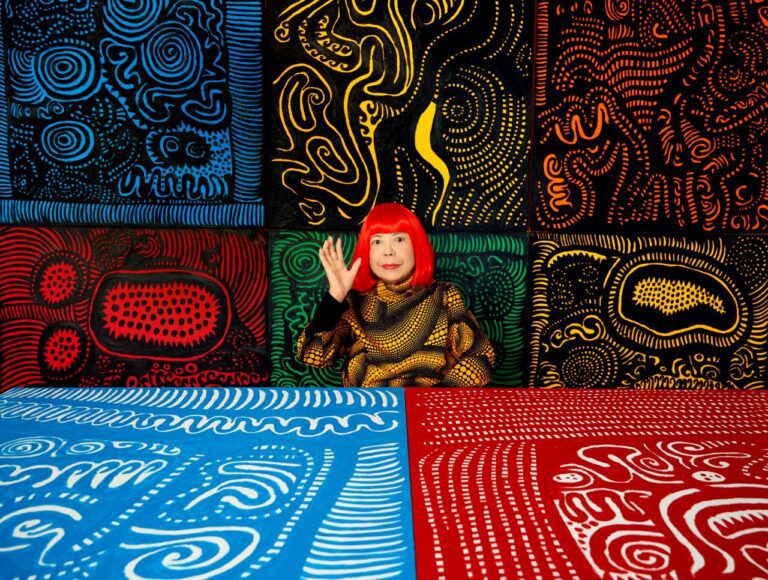If 10 years ago you would have told Simon Goodburn by the time he was 27 he would smash a world record crossing Greenland’s arctic wasteland on a kiteboard with his father-in-law, he would have said you were mad. But that was long before he married into Geoff Wilson’s family. And he’s been re-defining his boundaries ever since.
“What I’ve learnt about Simon is what might take me six months to learn, he will learn in three,” Wilson observes with admiration. Already a well-respected Australian adventurer, Wilson juggles his escapades with family life and his veterinarian business on the Gold Coast. Aside from breaking world records, he has crossed 3482kms of Antarctica alone, unassisted, in 53 days; traversed the Saharan Desert on a kite-buggy in 42 days; and led an expedition of 11 to successfully cross from Cape York to Papua New Guinea on kiteboards (this time with Goodburn on board) in 2012.
And now both he and Goodburn can claim the fastest unassisted crossing of Greenland’s plateau, all 2160 isolated, icy, crevassed kilometres of it, in 17 days and nine hours. They are the only Australian team to cross Greenland south to north, covering the furthest distance in a polar region in a calendar week and breaking records to add to an ever-stretching bow.
It’s probably fair to say they are leading “adventurous lives”. Empowered by dreams, a learned resilience, and a good cause, it’s a calling that’s due to more than mere genetics, despite Wilson’s Viking and pioneering ancestral roots.
Wilson lives according to a philosophy, which among other things, includes a firm belief in the importance of dreaming; of having a goal aside from the materialism so entrenched in today’s modern world.
“We’ve lost the magic of imagination and dreaming. It’s deemed as a childish endeavour,” he explains. “My message is, we need to have a dream on the horizon. That’s part of the whole point of dreaming and imagination – to keep you focused, keep you jumping out of bed with a spring in our step. If I can move someone off the couch I’ve done a good day’s work.”
Well, if his influence on Goodburn is anything to go by, he could consider his job well done. And Wilson, 20 years his senior, refers to his son-in-law as the ultimate test dummy.
“What we’ve shown with Simon is that resilience is definitely teachable,” he remarks. “The way the human body responds to duress in a wilderness environment is something that really fascinates me through all of my journeys. How do you know how much more you have in the tank before you feel finished? How do you walk that tightrope between good decision-making and not getting yourself killed through poor decision making? Simon is an absolute test case of a guy changing his whole outlook towards hardship,” he says, going on to compare Goodburn’s journey across the Torres Strait five years ago with the more recent Greenland trek.
Because it’s certainly been a steep learning curve. Prior to training for Papua New Guinea, Goodburn had never even kite-surfed before.
“About 70kms out from the Papua New Guinea coast – Simon and my daughter Jade had been dating for about a year at this stage – I looked to my right and Simon was gone. I looked back on the horizon and could just make out this yellow kite. I kitesurfed back, there he was in the water looking very defeated. ‘What are you doing?’ I asked. ‘I’m waiting to be picked up, I’m done,’ he said (the support boat was behind waiting to pick up the stragglers). So I said, ‘Simon, mentally you feel like you’re done now, but there’s a safety system in all of our bodies that makes the brain tell you that we’re finished about 30 per cent early, so you’ve still got 30 per cent left in the tank. You’re well over 70 per cent through this journey. You can see the coast in the distance… Don’t think of it as a 70km journey, think of it as a 5km journey with lots of stops. And besides, if you’re going to marry my daughter, then you’re going to get to Papua New Guinea.’ And it was just the impetus he needed to get there.”
Goodburn refers to that first expedition his “first crucible.” He says, “I guess that was my first lesson as far as mental grit. I genuinely felt I had given my everything. Mentally I didn’t have the tenacity to push through that barrier – and it was just a barrier. Having Geoff see something in me that I couldn’t was transformational for me.
“I thought to myself, ‘I’ve at least got to give it another go.’ And as I did, I got a second wind and I discovered he was right. That experience in the Torres Strait garnered me with the ability to recognise pain and push through it. And I feel like I can apply that to my whole life,” Goodburn says gratefully.
It’s a lesson he took to Greenland, where the temperatures reached minus 35, winds were up to 40 knots, sleep was reduced to three to four hours a sunny “night”, heavy sleds bruised hips, and ridges in the ice made his knees some days feel like “they were being ground to a paste.”
“I was in agony, Geoff could audibly hear me screaming at times,” he recalls. “But it was a weird balance between, ‘am I doing permanent damage or do I just have to push through?’ ” He adds, “The mental tenacity is still something that Geoff holds over me. I’m in my prime physically but that doesn’t mean anything if my mental strength is not up to par.”
It’s a sporting mentality that was reflected in the pair’s self-directed training for Greenland. While dragging tyres across Queensland’s golden beaches and up cemented hillside roads, they were also developing the mental strength required.“It was all envisioning the goal, speaking out about the different things I wanted to achieve, how fast I wanted to be going, meditating them on them, and watching them manifest on the journey,” Goodburn says. “When training, I wouldn’t picture bush, I would do my best to picture vast swathes of ice… It’s pretty incredible what your mind can achieve. It’s definitely a learned skill and it’s something you have to work on,” he adds.
Wilson calls it part of the “all-in approach”. “Sit down with a piece of paper and look at everything you’re doing. If you’re not ‘all in’… then be honest with yourself. Why am I not all in? Can this be rectified?” he explains. Wilson also has nine dreams of personal significance at different levels, which he refers to as “easy win, moderate, stretch”. “For me, my stretch is to do the longest solo journey in history,” he says.
To succeed, he builds what he refers to as a “faith image”, picturing what that dream looks and feels like right down to the minute detail, which he then uses like a road map. He then identifies what’s required to fulfil the dream by analysing his talents and fills any gaps by methodically acquiring the knowledge that’s missing. It’s a process Wilson refers to as “uplinking”, such as when, as a man from the Gold Coast, learned how to survive in a polar environment prior to Antarctica by linking up with one of the world’s most successful polar adventurers.
“It’s amazing what you can learn. Isolate the weakness, find the uplink and just spend time soaking it up.” Goodburn adds: “You have to have your humility to go ‘I think what you’ve done is amazing, teach me how to do that…’ It’s something I’ve applied in all kinds of areas of my life, the importance of mentorship.”
Topping it all off, is the “why”.
“One of the single biggest things when you’re going into a harsh journey you need to be aligned with something that you believe in,” Wilson explains. “That’s one of the keys… The ‘why’ for being there has to be big enough to get you through the roadblocks.”
The pair’s “why” has long been the McGrath Foundation. Along with fundraising for the cause, Wilson’s Antarctic mission included a pink sled fashioned into the shape of two breasts. In Greenland, the two sleds were bright pink.
“I had spent a lot of time in hospital with women who were connected to chemo pumps, had just had bilateral mastectomies, were going through reconstructive surgery multiple times, and I realised just how arduous their journeys had been,” Wilson says, referring to the lead-up to Antarctica.
“When I got to a position in Antarctica, where a normal mortal would have tapped out, it still wasn’t an option for me because I had all these images in my mind and I knew there were women back home, connecting to chemo, reading the blogs… And I had a real passion for what McGrath was trying to do to provide a breast-care nurse to every woman across the country.”
Comparing his wife Sarah’s role on the satellite phone during his expeditions to that of a breast-care nurse, he believes the importance of someone who connects with what you’re going through but has a refreshed foresight and logic, is paramount.
“They can say ‘I know it looks pretty crap right now but I’ve seen it come good, so keep pressing on’. Understanding that gave me the rocket fuel to go through these obstructions.”
Goodburn agrees.
“There were faces and names I could directly associate with when I was going through a tough time. It was rocket fuel to me.”
So what’s next?
“I’m definitely living and breathing adventure,” says Goodburn from the pair’s headquarters, where he and Wilson run an expeditions business. And they both show no signs of slowing down, with kiteboarding trips including Goodburn’s wife Jade in Norway and New Zealand on the calendar, plus the longest solo crossing of Antarctica – more than 5000km – beckoning Wilson forward. “For Simon and I as Australian explorers it’s exciting, we’ve got a period of time, a window, where we can push some boundaries,” Wilson says.
Not bad for a couple of blokes from the beach.







